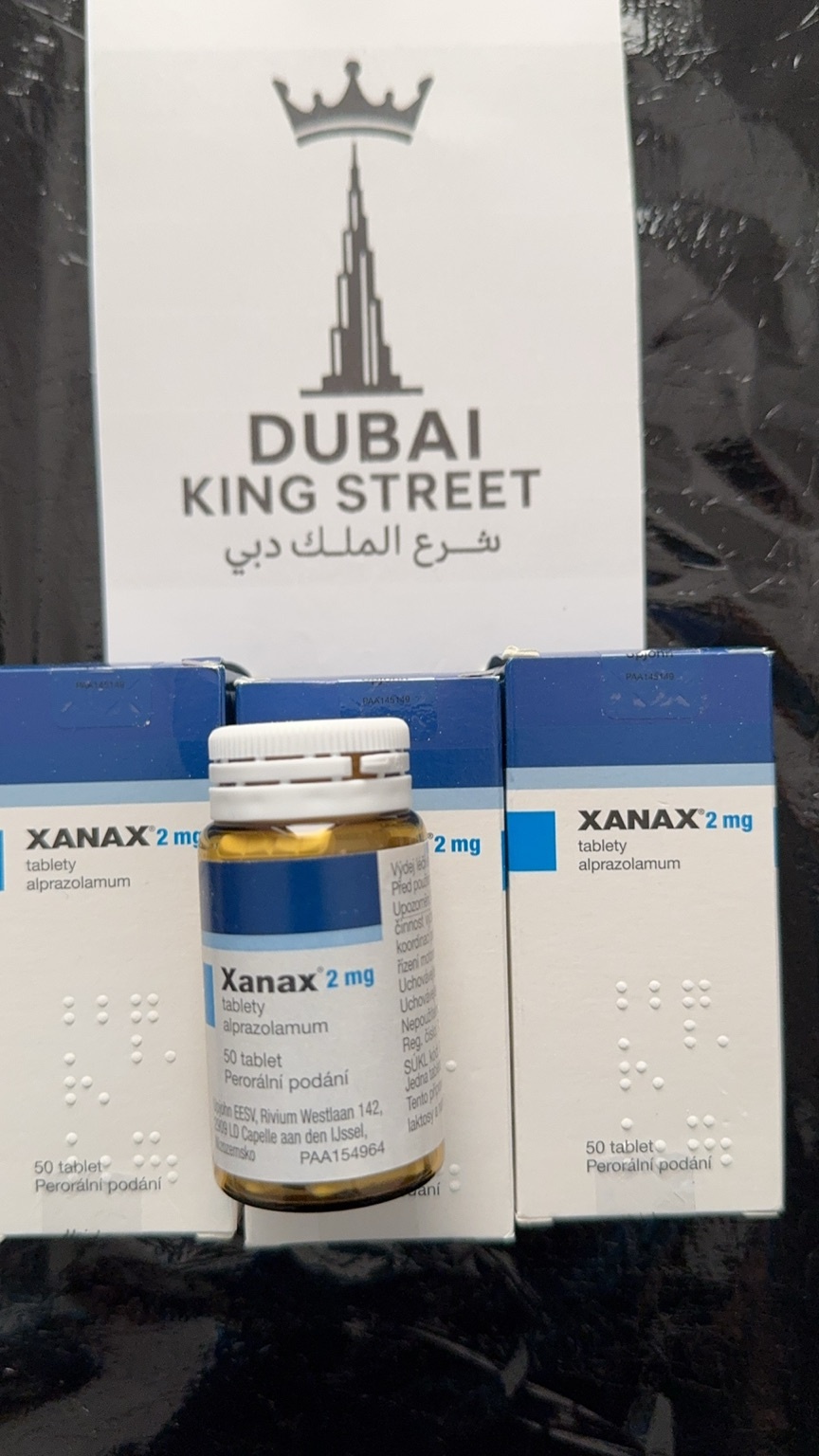Details
What Is Xanax (Alprazolam) 2 mg?
Xanax is the brand name for alprazolam, a medication belonging to the benzodiazepine class. It is commonly used in clinical settings to manage conditions such as generalized anxiety disorder (GAD), panic disorder, and in some cases, short-term relief of acute anxiety symptoms. The active compound, alprazolam, works by enhancing the effect of gamma-aminobutyric acid (GABA)—a neurotransmitter that inhibits activity in the brain, helping to produce a calming effect.
At a 2 mg dosage, Xanax is considered one of the higher strengths available and is typically prescribed in cases where lower doses have not provided sufficient relief, always under medical supervision. The 2 mg form is often recognized by its distinct rectangular shape and is sometimes referred to informally by users as a “bar” due to its scored design, which allows it to be divided into smaller doses. However, any usage of this medication must be strictly monitored by a healthcare professional due to its potency and potential for dependence.
How Alprazolam Works in the Central Nervous System
Alprazolam exerts its effects by binding to benzodiazepine receptors, which are part of the GABA-A receptor complex. When it binds, it potentiates the action of GABA, leading to increased neuronal inhibition and a general depressant effect on the central nervous system (CNS). This is what contributes to its anxiolytic (anti-anxiety), sedative, muscle-relaxant, and anticonvulsant properties.
Because it acts rapidly and has a relatively short half-life compared to other benzodiazepines, alprazolam is often used in acute episodes rather than as part of long-term therapy. However, abrupt discontinuation after extended use can result in withdrawal symptoms, which is why any change in dosage or treatment plan must be managed carefully. In clinical pharmacology, alprazolam continues to be studied for its interaction with GABAergic systems and its potential comparative efficacy versus other benzodiazepines.
Clinical Considerations and Cautionary Notes
Due to its central action and potential for tolerance, dependence, and misuse, alprazolam is classified in many countries as a controlled substance. It is generally prescribed at the lowest effective dose for the shortest duration necessary. Patients with a history of substance use disorder, depression, or certain respiratory conditions may require special consideration before being prescribed alprazolam.
In research and medical literature, alprazolam is also evaluated in terms of pharmacokinetics, drug interactions, and its profile compared to newer anxiolytics. The 2 mg strength, in particular, is usually reserved for cases requiring structured dose titration and close medical oversight. Healthcare providers are encouraged to assess risk factors before initiating treatment and to provide guidance on proper tapering protocols when discontinuation becomes appropriate.



